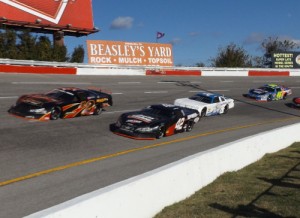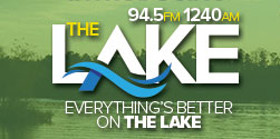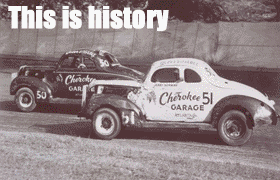
Dennis Reno (2x) and Chad Finley (42) lead a pack of cars through turn three during Saturday’s running of the All American 400 at Fairgrounds Speedway Nashville. Photo by Steve Brown
NASHVILLE, TN – Was the 30th annual All-American 400 at Fairgrounds Speedway Nashville in Nashville, TN on Saturday a success?
Let’s see. Sixty Pro Late Models entered to take home the winner’s guitar. Of the entries, 47 drivers made it to qualifying and 11 went home before the green flag waved for the main event.
That’s a heck of a car count in these trying times for stock car racing. Heck, it’s trying times for all of racing.
Still, there will be fans and racers – and writers – who will bemoan this race because of one word that describes the cars: Pro. It should be Super, they say.
Maybe they’re right. Maybe marquee races that feature Pro Late Models instead of Super Late Models aren’t really marquee races.
In case you need to be brought up to speed, Pro Late Model cars have crate engines that produce a set amount of horsepower. Super Late Models have unlimited, special-built engines that can produce as much horsepower as you’re willing to pay for.
And that’s why Tony Formosa, the promoter of Fairgrounds Speedway Nashville, is on to something.
Even Super Late Model supporters can agree that racing is too expensive. Because of the uniform crate engine, it’s a lot cheaper to put together a Pro Late Model.
Maybe that’s why the 60 entries and 47 qualifiers are the most this race, which has traditionally been a Super Late Model race often ran with a sanctioning body like the Pro All Star Series or Southern Super Series, has boasted in several years. Maybe the engine parity is why 18 cars finished on the lead lap – a high number for a 300-lap race.
Speculation in racing circles suggested the All-American 400 wouldn’t mean as much this year. Ask the winner, John Hunter Nemechek, if he feels less excited about taking home that winning guitar. Ask NASCAR Hall of Famers Darrell Waltrip or Jack Ingram or any of the estimated 5,000 fans who braved near freezing temperatures if this race didn’t mean as much as it did last year.
To be fair, was this race a classic? No. Nemechek led 294 of the 300 laps, although he was never far from the grasp of his nearest challenger. The six lead changes among three drivers and 11 cautions don’t make for the best stat line.
But there was plenty of passing. Willie Allen, who made it into the field in the 100-lap last-chance qualifier earlier in the day, started 30th and finished second. Only two drivers – Nemechek and Anderson Bowen – who started in the top five were able to finish there.
Make no mistake: the All-American 400 is not the Snowball Derby, which is generally considered to be the biggest Super Late Model race in the country. But the All-American field was still speckled with stars amongst some Tennessee drivers who undoubtedly welcomed the opportunity to race for a marquee prize.
There was a time that even NASCAR races still had room for the little, local guy. Just a decade ago, an ARCA driver or two could sneak into the Daytona 500 field.
Those were better, healthier times for racing.
The new All-American 400 rules didn’t stop familiar faces in the biggest Super Late Model races from making an appearance. Instead, they gave more grassroots drivers an opportunity to make a name for themselves in one of the pinnacles of grassroots racing.
Even Super Late Model races – even the Snowball Derby – are still considered by the average race fan to be grassroots events. With this in mind, grassroots racing should always be affordable enough for those who are high on talent but short on dollars. Racing should cater to the 99 percent and not the 1.
So was the All-American 400 a success? Absolutely.
It could even be the blueprint for a healthier sport.





















Leave a Reply
You must be logged in to post a comment.